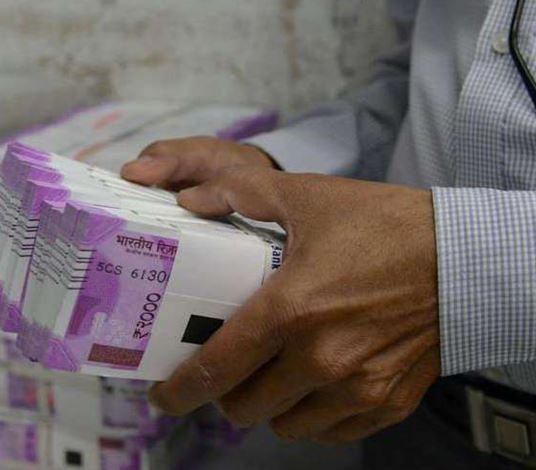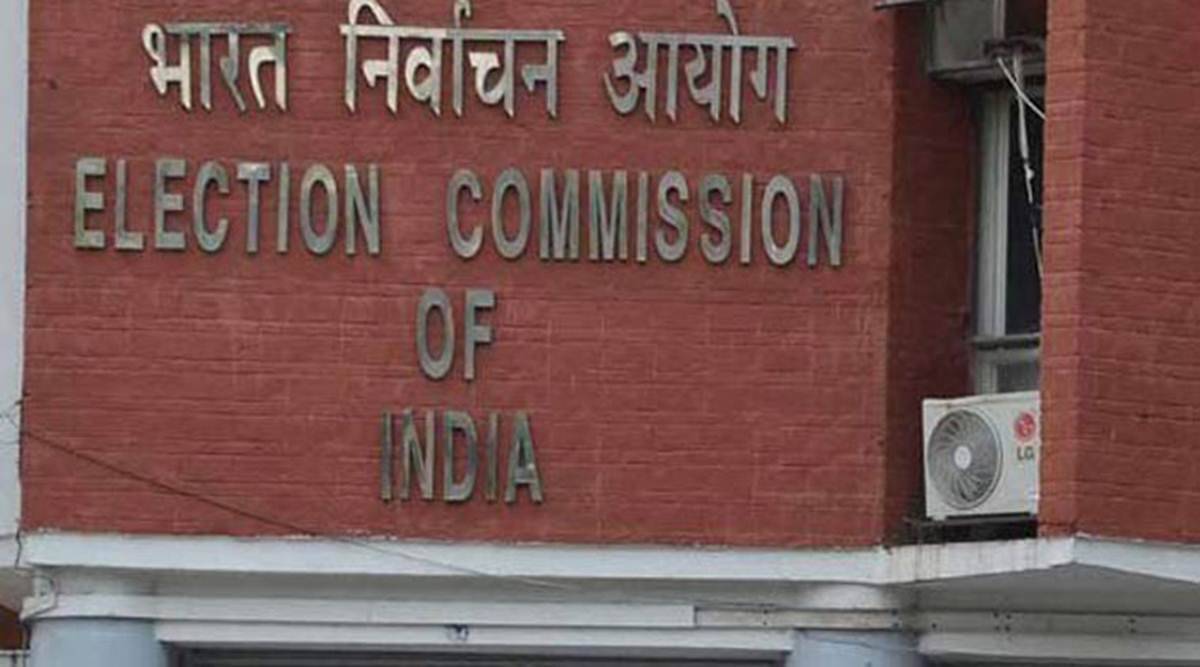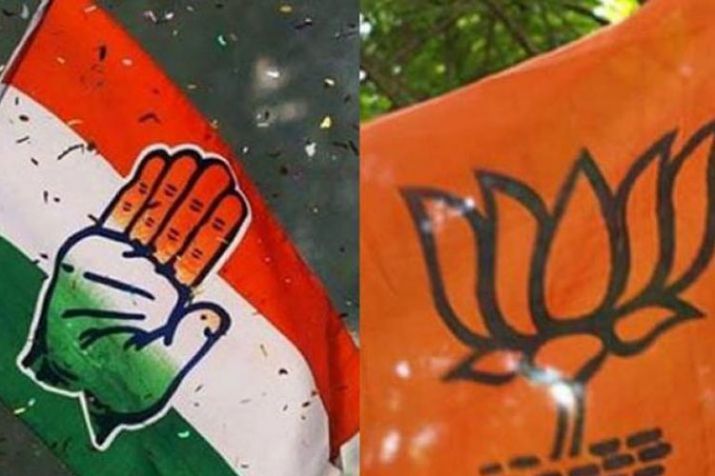NPA crisis of Indian banking system is a ticking time bomb that can explode any time with disastrous consequences. The potential damage to the economy due to the present NPA crisis is huge. The legacy of NPA in banking is largely to be blamed to the various governments that have ruled India and milked the public sector banks in promoting crony capitalism.
The problem reached epic proportion during the past two decade when selective set of industrial houses were favoured by government by putting pressure on the banks board to clear unsustainable business models. Surely the blame must be shared by ruling elites, mainly finance ministers, RBI governors and greedy bankers who in their respective interest have harmed the entire economy of the country.
Indian banking sector has been facing serious problems of raising Non-performing Assets (NPAs) since liberalisation of the economy was kicked off. The NPAs growth has a direct impact on profitability of banks. Non-performing assets are one of the major concerns for scheduled commercial banks in India. On the recommendations of Narasimham Committee and Verma committee, some steps have been taken to solve the problem of old NPAs in the balance sheets of the banks.
It continues to be expressed from every corner that there has rarely been any systematic evaluation of the best way of tackling the problem. There seems to be no unanimity in the proper policies to be followed in resolving this problem. NPAs reflect the performance of banks. A high level of NPAs suggests high probability of a large number of credit defaults that affect the profitability and net-worth of banks and also erodes the value of the asset. NPAs affect the liquidity and profitability, in addition to posing threat on quality of asset and survival of banks.
The problem of NPAs is not only affecting the banks but also the whole economy. In fact high level of NPAs in Indian banks is nothing but a reflection of the state of health of the industry and trade. It is necessary to trim down NPAs to improve the financial health in the banking system.
Understanding NPA: An attempt is being made in this paper to understand the NPA, the status and trend of NPAs in Indian Scheduled commercial banks, the factors contributing to NPAs, reasons for high impact of NPAs on scheduled commercial banks in India and recovery of NPAs through various channels. The Reserve Bank of India (RBI) is moving to resolve the bad loan crisis with an Internal Advisory Committee (IAC) of the RBI having identified 12 accounts of corporate borrowers who owe over Rs 5,000 crore each — and overall involve an amount of close to Rs 175,000 crore — for insolvency proceedings under the newly enacted Insolvency and Bankruptcy Code 2016 (IBC).
The RBI committee has recommended for IBC reference all accounts with fund and non-fund based outstanding amounts in excess of Rs 5,000 crore, with 60% or more (Rs 3,000 crore or more) classified as non-performing by banks as on March 31, 2016. However, the central bank did not reveal the names of these 12 defaulters. With total NPAs or bad loans of banks now close to Rs 700,000 crore, the money of banks stuck in these 12 accounts is estimated to be around Rs 175,000 crore.
“The IAC also arrived at an objective, non-discretionary criterion for referring accounts for resolution under IBC,” the RBI said. The RBI, based on the recommendations of the IAC, will issue directions to banks to file for insolvency proceedings under the IBC in respect of the identified accounts. Such cases will be accorded priority by the National Company Law Tribunal (NCLT).
Once referred to the NCLT, the resolution of the case in terms of either a sell-off of assets or revival or winding up will have to be completed within 180 days. The government had issued an ordinance last month by amending the Banking Regulation Act to empower RBI to recover ballooning NPAs. The amendment empowers the RBI to ask banks to initiate insolvency resolution proceedings for bankruptcy code cases and recover bad loans.
The RBI recently announced several steps, including the reconstitution of oversight committee (OC) and bigger role for credit rating agencies to bring down NPAs. It also sought information on the current status of large stressed assets from banks. The oversight committee so far comprised two members. It has been constituted by the Indian Banks Association in consultation with the RBI. It then decided to reconstitute the OC and enlarge it to include more members so that the OC can constitute requisite benches to deal with the volume of cases referred to it.
The RBI plans to expand the scope of cases to be referred to the OC beyond those under the Scheme for Sustainable Structuring of Stressed Assets (S4A) as required currently, it said. According to the RBI, the current guidelines on restructuring are under examination for such modifications as may be necessary. In order to prevent rating-shopping or any conflict of interest, the RBI is exploring the feasibility of rating assignments being determined by the RBI itself and paid for from a fund to be created out of contribution from banks and the RBI. The loan recovery exercise will require coordination with and cooperation from several stakeholders including banks, asset reconstruction companies, rating agencies and private equity firms.
An NPA is defined as loan or an advance where interest and/or installment of principal remain overdue for a period of more than 91 days in respect of a term loan, The account remains ‘out of order’ for a period of more than 90 days, in respect of an Overdraft/Cash Credit (OD/ CC), The bill remains overdue for a period of more than 90 days in the case of bills purchased and discounted, interest and/or instalments of principal remains overdue for two harvest seasons but for a period not exceeding two half years in the case of an advance granted for agricultural purposes, and Any amount to be received remains overdue for a period of more than 90 days in respect of other accounts.
It also involves non-submission of stock statements for three continuous quarters in case of cash credit facility; no active transactions in the account (Cash Credit/Over Draft/EPC/PCFC) for more than 91days, further classify non-performing assets further into the following three categories based on the period for which the asset has remained non-performing and the realisability of the dues.
Sub-standard assets: A sub-standard asset is one which has been classified as NPA for a period not exceeding 12 months.
Doubtful Assets: A doubtful asset is one which has remained NPA for a period exceeding 12 months.
Loss assets: where loss has been identified by the bank, internal or external auditor or central bank inspectors. But the amount has not been written off, wholly or partly. Sub-standard asset is the asset in which bank have to maintain 15% of its reserves.
All those assets which are considered as non-performing for period of more than 12 months are called Doubtful Assets. All those assets which cannot be recovered are called as Loss Assets. Some advanced tools like Experian India’s “Hunter Fraud Score” have also been launched that work on data mining and calculate some authentic score that can help banks detect fraud and lower their losses.
Reasons for Occurrence of NPAs: NPAs result from what are termed “Bad Loans” or defaults. Default, in the financial parlance, is the failure to meet financial obligations, say non-payment of a loan installment. These loans can occur due to the following reasons: Usual banking operations /Bad lending practices, A banking crisis (as happened in South Asia and Japan), Overhang component (due to environmental reasons, natural calamities, business cycle, Disease Occurrence, etc...), Incremental component (due to internal bank management, like credit policy, terms of credit, etc...).
The Problems caused by NPAs: NPAs do not just reflect badly in a bank’s account books, they adversely impact the national economy. Following are some of the repercussions of NPAs: Depositors do not get rightful returns and many times may lose un insured deposits. Banks may begin charging higher interest rates on some products to compensate Non-performing loan losses, Bank shareholders are adversely affected, and Bad loans imply redirecting of funds from good projects to bad ones. Hence, the economy suffers due to loss of good.
Impact of NPA: NPA impact the performance and profitability of banks. The most notable impact of NPA is change in banker’s sentiments which may hinder credit expansion to productive purpose. Banks may incline towards more risk free investments to avoid and reduce riskiness, which is not conducive for the growth of economy. If the level of NPAs is not controlled timely they will reduce the earning capacity of assets and badly affect the ROI.
There would be other impacts as well
1 The cost of capital will go up,
2 The assets and liability mismatch will widen,
3 Higher provisioning requirement on mounting NPAs adversely affect capital adequacy ratio and banks profitability,
4 The economic value additions (EVA) by banks get upset because EVA is equal to the net operating profit minus cost of capital,
5 NPAs causes to decrease the value of share sometimes even below their book value in the capital market,
6 NPAs affect the risk facing ability of banks,
7 Reduce the earning capacity of assets and badly affect the ROI,
8 The cost of capital will go up,
9 The assets and liability mismatch will widen,
10 Higher provisioning requirement on mounting NPAs adversely affect capital adequacy ratio and banks profitability,
11 The economic value additions (EVA) by banks get upset because EVA is equal to the net operating profit minus cost of capital,
12 NPAs causes to decrease the value of share sometimes even below their book value in the capital market,
13 NPAs affect the risk facing ability of banks.
RBI may initiate actions against defaulters like, publishing names of de-faulters in Newspapers, broadcasting media, which is helpful to other banks and financial institutions.
As a part of curative measures, bankers may resort to Compromise Settlement or One Time Settlement. Lok Adalats and Debt Recovery Tribunals are other ways for the recovery of dues. It has been observed that Banks these days are highly resorting to SARFAESI Act for the management of NPA.
If the delinquencies are due to reasons beyond the control of borrower which are namely draughts, floods, or other natural calamities, the banker should suitably restructure the loans taking into account the genuine difficulty of the borrowers.
Ineffective recovery, willful defaults and Defective lending process are the important factors which are responsible for the rise of NPAs in banks.
The non-performing assets have always created a big problem for the banks in India. It is just not only problem for the banks but for the economy too. The money locked up in NPAs has a direct impact on profitability of the bank as Indian banks are highly dependent on income from interest on funds lent. This study shows that extent of NPA is comparatively very high in public sectors banks. Although various steps have been taken by government to reduce NPAs but still a lot needs to be done to curb this problem.
The NPAs level of our banks is still high as compared to the foreign banks. It is not at all possible to have zero NPAs. The bank management should speed up the recovery process. The problem of recovery is not with small borrowers but with large borrowers and a strict policy should be followed for solving this problem. The government should also make more provisions for faster settlement of pending cases and also it should reduce the mandatory lending to priority sec-tor as this is the major problem creating area. So the problem of NPA needs lots of serious efforts otherwise NPAs will keep killing the profitability of banks which is not good for the growing Indian economy at all.
Secondly, the banks management should be given more discretion to take bold decisions with fear of investigating agencies scooping on them. Banking is a professional work and the management must devise mechanism to resolve the crisis by setting up accountability within the system. The bank must ensure that the management should have contemporary knowledgeable experts with the board to vet the risk factors.
Moreover the bank must ensure that project sanctioned by the board must be vetted by the highly qualified third party having knowledge of business and trade. It will ensure transparency and ease for the banks to take decisions. Over activism of the investigative agencies will lead to fear in the banking sector wherein the bankers will start avoiding taking any decision to save their skin for any subsequent trouble in case of default.
The present state of banking is suffering from catch 22 crisis where no banker is taking any decision and the lending has gone down substantially leading to the slowdown of the economy. The vigilance department within the bank must be trained to catch the black sheep as and when the deliberate corruption is initiated.
Last but the most important is to bring fear factor in the willful defaulters operators and to bring sanity in the system. In 2014, All India Bank Employees’ Association (AIBEA) released a list of 406 bank loan accounts amounting to Rs70,300 crore that have been declared bad. The bank union pointed out that the top four bad loan accounts add up to a massive Rs22,666 crore, which include Kingfisher Airlines and Winsome Diamond and Jewellery Co.
According to the list published by Newslaundry, steel and the metals and mining sector feature prominently on the list of top 10 defaulters. “Of the 10 companies, four are public sector undertakings: Hindustan Cables (Rs4,917 crore), Hindustan Photo Films (Rs3,929 crore), Prag Bosimi (Rs3,558 crore) and Malvika Steel (Rs3,057 crore), which was bought over by SAIL from Usha Group in 2009. Both Hindustan Cables and Hindustan Photo Films are declared terminally sick, and the former may shut down soon,” the report says.
However, only two of these are really public sector units. The list also has names of Usha Ispat (Rs16,911 crore), Lloyds Steel (Rs9,478 crore), Prakash Industries (Rs3,665 crore), Zoom Developers (Rs3,843 crore), Cranes Software International (Rs3,580 crore) and King-fisher (Rs3,529 crore). Many of these are non-functional today raising question on the period of defaults. Malavika Steels and Usha Ispat are long gone.
The present government must come up with a white paper on the state of banking in India and set up investigation against all the defaulters by linking Aadhaar with respective director accounts of all defaulted companies, it will reveal the amount of pilferage done by the directors from the loan account to their respective private accounts and majority of them are leading lavish life-style by mastering the system through availability of liquidity in personal accounts. The money belongs to people of India and all the white colour criminals must be brought to books to establish credibility of the banks in India.
How to manage NPAs
- RBI should revise existing credit appraisals and monitoring systems.
- Banks should improve upon and strengthen the loan recovery methods
- Credit appraisal and post –loan monitoring are crucial steps which need to concentrate by all the public sector banks.
- There must be regular follow-up with the customers and it is the duty of banker to ensure that there is no diversion of funds. This process can be taken up at regular intervals
- Personal visits should be made after sanction and disbursal of credit and further close monitoring of the operations of the accounts of borrowed units should be done periodically
- Managers under credit monitoring and recovery department should have dynamism in their work. Many managers say that “we do not fear to negotiate but we do not negotiate out of fear. Such fear leads to arbitrary negotiation, which fails
- Assisting the borrowers in developing his/her entrepreneurial skill will not only establish a good relation between the borrowers but also help the bankers to keep a track of their funds.
LEGAL COURSE
Number of Cases Referred to Lok Adalat was 1,86,535 in 2008 and reached to 16,36,957in 2014 Rs. 2,535 cr of NPAs of SCBs recovered through Lok Adalat during 2008 to 2014 Rs. 27,231 cr of NPAs of SCBs recovered through DRTs during 2008 to 2014 Rs. 77,241 cr of NPAs of SCBs recovered through SARFAESI Act during 2008 to 2014
DEFAULTERS’ GALLERY
As per AIBEA list, as on 2014, Vijay Mallya-owned and now defunct Kingfisher Airlines was the big-gest defaulter and owe Rs2,673 crore to public sector banks (PSBs). Mumbai-based Winsome Diamond and Jewellery Company (erstwhile Suraj Diamond India Ltd), with dues of Rs2,660 crore, was the second highest defaulter, followed by Electrotherm India Ltd at Rs2,211 crore. Some of the other big-ticket defaulters include, Zoom Developers Pvt Ltd (Rs1,810 crore), Sterling Biotech Ltd (Rs1,732 crore), S Kumars Nationwide Ltd (Rs1,692 crore), Surya Vinayak Industries Ltd (Rs1,446 crore), Ispat Alloys Ltd (Rs1,360 crore), Forever Precious Jewellery and Diamonds (Rs1,254 crore), Sterling Oil Resources Ltd (Rs1,197 crore) and Varun Industries Ltd (Rs1,129 crore).








 OpinionExpress.In
OpinionExpress.In















Comments (0)